Dog Ear Cleaning: Essential Steps & Tips

Written by
David Smith
Reviewed by
Prof. Edward Clarke, Ph.D.Proper cleaning of your dog's ears will help to prevent infections and keep your dog's hearing healthy.
Only use cleaning solutions made for dogs, since human products can disrupt your dog's natural ear pH.
Depending on the breed of your dog, you may have to clean their ears once a week or every other week.
You can also identify an ear infection early by noticing if your dog has discharge, odor, or scratches at or starts to show pain upon touching the ears.
Avoid using cotton swabs to clean your dog's ears since they may only push debris deeper into the ear rather than cleaning the ear.
make sure to consult your veterinarian prior to starting any ear cleaning routine.
Article Navigation
Cleaning your dog's ears properly preserves your pet's unique sense of hearing. Dogs hear sounds four times softer than humans can. The accumulation of debris can lead to infections due to the inability to absorb medications effectively. Safe techniques are needed to avoid these problems. I learned this firsthand after the first ear infection with my spaniel, Max.
This guide offers trustworthy home remedies. With proper care, you can avoid needless vet calls. Keep in mind that approximately 20% of the dogs will develop ear problems that require attention. You should start looking for early signs of trouble with gentle weekly checks. Your dog's comfort will largely depend on whether preventive care is given consistently.
Essential Cleaning Supplies
Using the appropriate solution ensures that cleansing the dog's ear is both safe and effective. pH-balanced veterinary products keep the natural acidity of your dog's ear intact, while those with natural ingredients such as chamomile ease your sensitive pet's ears without irritation from chemicals. I regularly use these for my terrier, who suffers from allergies. Avoid home remedies such as vinegar, which can cause stinging and irritation.
Cotton pads are far more effective than swabs for cleaning. They wipe debris outward rather than pushing it farther into the canal. I discovered this during a veterinary visit, where I was shown the impacted wax heap that resulted from the use of swabs. Be sure to have a stack of them ready before beginning the cleaning process.
Pick high-value rewards based on positive-reinforcement science. Studies show dogs learn best when they receive immediate rewards following stressful procedures. For each ear procedure, use small pieces of chicken or cheese immediately afterward. This helps build trust, making it easier for both of you during subsequent cleanings.
Always have a thick towel available for cleaning your dog's ears. Dogs often shake their heads after the solution is instilled. The towel absorbs the moisture and debris that flies away. I use the towel over my shoulder like a vet tech, so I have it available during the messier phases of surgery.
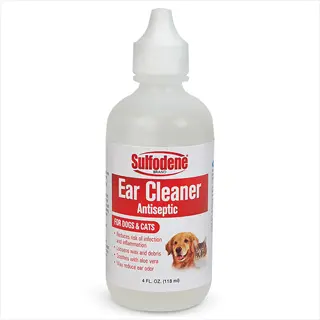
Veterinary Ear Solution
- Alcohol-free veterinary formulas prevent irritation in sensitive ear canals by avoiding harsh chemicals that can cause inflammation and discomfort during cleaning procedures
- pH-balanced solutions specifically designed for canine ear chemistry requirements maintain the natural acidic environment that inhibits bacterial and yeast overgrowth effectively
- Natural ingredients like chamomile provide soothing anti-inflammatory effects while calendula offers gentle antimicrobial protection without synthetic additives
- Antibacterial properties actively reduce microbial overgrowth risks by disrupting cell membranes of common pathogens found in canine ear infections
- Specialized wax-dissolving agents break down stubborn debris accumulations for easier removal during the massage and wiping stages of cleaning
- Available as convenient liquid solutions or pre-soaked pads that simplify application while maintaining precise dosage control for safety
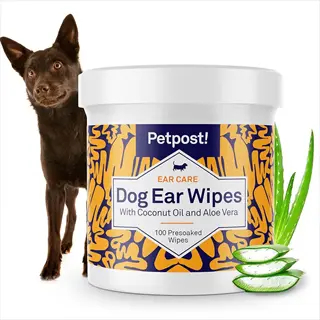
Cotton Pads
- Soft textured surfaces prevent scratching delicate ear canal epithelium during debris removal while absorbing solution efficiently without leaving fibers behind
- Highly absorbent material soaks up dissolved earwax and cleaning solution effectively without requiring excessive pressure that could cause discomfort
- Large surface area covers more epithelial surface per wipe than swabs while preventing debris from being pushed deeper into the horizontal canal
- Disposable single-use nature maintains strict hygiene standards between cleaning sessions and prevents cross-contamination between applications
- Reinforced thick construction prevents tearing during debris removal while maintaining structural integrity when wiping folded ear flaps clean
- Chemical-free pure cotton composition avoids introducing new irritants or allergens that could compromise the ear's natural protective barrier

Training Treats
- High-value food rewards create positive neurological associations with ear cleaning through dopamine release that counteracts procedural anxiety effectively
- Soft easily chewable textures allow quick consumption without prolonged distraction from the cleaning process or choking hazards during procedures
- Miniature bite-sized portions prevent overfeeding during multiple reward moments throughout extended cleaning sessions requiring patience and cooperation
- Hypoallergenic formulations avoid common canine food allergens like chicken or grains that could trigger inflammatory responses during cleaning
- Potent natural aromas from liver or fish maintain attention focus during cleaning without artificial additives that might cause digestive upset
- Nutritionally balanced compositions provide supplemental calories without disrupting dietary requirements when used moderately during grooming routines

Absorbent Towel
- Quick-dry microfiber material catches shaken solution droplets efficiently while preventing moisture accumulation that could promote microbial growth post-cleaning
- Non-slip rubberized backing maintains secure grip during vigorous head shaking motions preventing towel displacement and messy solution splatter
- Machine-washable durable construction ensures hygienic reuse through multiple cleaning cycles without degradation of absorbency or texture quality
- Hypoallergenic gentle texture prevents skin irritation around sensitive facial areas during post-cleaning wipe-downs of the head and neck
- Generous size dimensions provide full coverage protection against accidental solution splatter onto furniture or flooring during messy procedures
- Ultra-lightweight compact design allows convenient storage in cleaning kits while remaining instantly accessible during impromptu ear care sessions
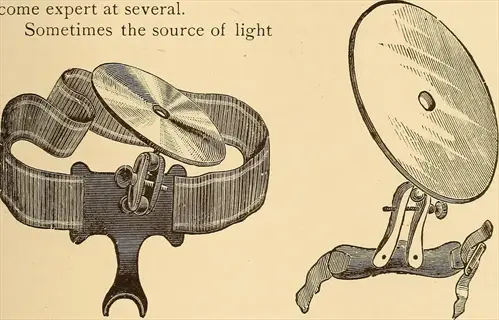
Ear Inspection Light
- LED penlights with adjustable brightness illuminate ear canal folds clearly without generating heat that could cause discomfort during examinations
- Water-resistant housings withstand accidental solution exposure during cleaning procedures while providing reliable visibility in dim environments
- Angled beam projections allow visual assessment of horizontal canal areas normally hidden from direct line-of-sight observation techniques
- Portable compact designs feature pocket-friendly forms that integrate seamlessly into cleaning kits for instant access during procedures
- Battery-powered operations ensure cord-free maneuverability during examinations without restricting movement around anxious or restless patients
- Non-slip textured grips maintain secure handling with solution-coated fingers during critical inspection phases after debris removal
Disposable Gloves
- Powder-free nitrile material prevents contamination transfer while maintaining tactile sensitivity needed for delicate canal massage techniques
- Hypoallergenic formulations eliminate latex proteins that could trigger allergic reactions in sensitive dogs during prolonged handling procedures
- Textured fingertips enhance grip security on slippery ear flaps and solution bottles during critical cleaning sequence steps
- Wrist-length cuffs prevent solution seepage onto skin while creating effective barriers against potential zoonotic pathogen transmission
- Ambidextrous designs allow quick donning without wasting time during time-sensitive cleaning procedures requiring immediate action
- Eco-friendly biodegradable options provide sustainable infection control without compromising protective barrier integrity during grooming
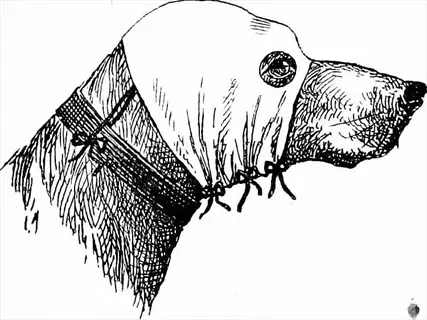
Ear Drying Solution
- Alcohol-free evaporative formulations quickly dissipate residual moisture without stinging sensitive epithelial surfaces after primary cleaning
- Acidifying properties restore natural ear pH levels disrupted during cleaning while inhibiting opportunistic pathogen colonization effectively
- Natural astringents like witch hazel gently contract tissues without causing excessive dryness that could lead to protective barrier compromise
- Non-greasy textures prevent clogging of pores or gland openings that regulate healthy cerumen production and epithelial turnover cycles
- Veterinary-recommended formulas complement prescription medications without interacting negatively with active pharmaceutical ingredients post-treatment
- Pre-measured applicators ensure precise dosage control while minimizing waste during routine post-cleaning moisture management protocols
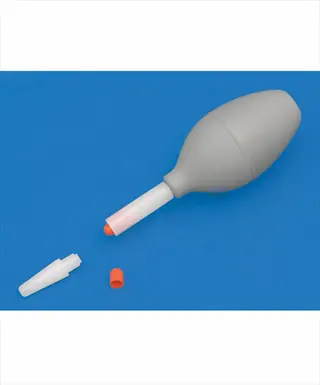
Ear Powder Applicator
- Hair-specific drying powders absorb excess moisture in hairy ear canals where liquid solutions might be less effective or practical
- Fine-mesh applicator tips distribute powder evenly without clumping that could cause mechanical irritation or incomplete coverage issues
- Talc-free formulations utilize safer cornstarch alternatives that avoid respiratory risks associated with traditional powder ingredients
- Anti-microbial additives provide supplementary protection against bacterial proliferation in warm moist ear canal environments post-cleaning
- Ergonomic squeeze bottles allow controlled one-handed operation during tricky hair-trimming procedures around complex ear anatomy
- Non-irritating compositions ensure compatibility with sensitive skin types while facilitating easier hair removal during grooming preparations
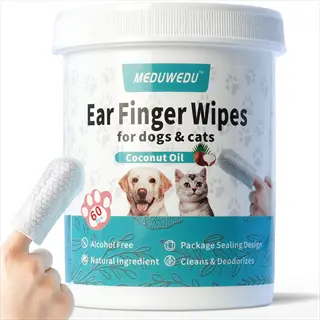
Pre-Moistened Wipes
- Pre-soaked pads with pH-balanced solutions offer convenient quick-cleaning options between thorough procedures for maintenance care
- Individually sealed packaging maintains sterility and solution potency during storage while preventing premature drying before application
- Textured surfaces enhance debris lifting capabilities without requiring excessive friction that might irritate sensitive epithelial tissues
- Biodegradable substrates provide eco-friendly alternatives to traditional cotton products while maintaining effective cleaning performance standards
- Soothing additives like aloe vera offer comfort during quick wipe-downs of outer ear surfaces and visible canal openings
- Travel-friendly portable formats enable on-the-go ear care during outdoor adventures where liquid solutions might be impractical
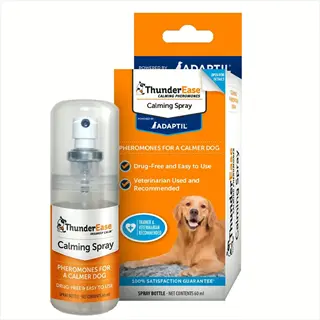
Calming Spray
- Pheromone-infused formulas mimic natural comforting signals that reduce procedural anxiety before and during cleaning sessions significantly
- Non-sedating compositions allow full cooperation without impairing neurological function or protective reflex responses during handling
- Environmentally sprayed versions create relaxing atmospheres in cleaning areas without requiring direct contact with sensitive ear tissues
- Natural botanical ingredients like lavender provide aromatherapeutic benefits without overwhelming sensitive canine olfactory systems excessively
- Veterinary-developed formulations ensure safety profiles compatible with dogs having seizure histories or neurological sensitivities
- Pre-procedure application protocols establish positive associations with cleaning spaces before actual handling begins for better compliance

Digital Timer
- Magnetic backing allows hands-free attachment to nearby metallic surfaces during critical timed massage sequences in cleaning procedures
- Loud audible alerts signal massage completion without requiring visual checks that might interrupt cleaning workflow continuity
- Water-resistant construction withstands accidental solution splashes during procedures while maintaining reliable timing functionality consistently
- Large display screens enable easy readability from various angles during dynamic cleaning positions around restless canine patients
- Memory functions store preferred massage durations for different ear conditions like routine care versus infection treatment protocols
- Battery-efficient operations ensure long-term reliability without frequent power source replacements disrupting cleaning kit readiness
Frequency Recommendations
Infection treatment differs significantly from maintenance in terms of the frequency of cleaning. For an active infection, clean daily for only as long as directed by your vet. Maintenance cleaning is performed for healthy dogs only when debris appears. My lab mix only needs cleaning every four years. Do not confuse these protocols.
"Differences between breeds require special attention, particularly with reference to the drooping ears. The Basset Hound and Spaniels should be cleaned every ten to fourteen days without fail. The ear flaps hold a great deal of moisture and are formed perfectly to incubate infections. The cleaning of my cocker spaniel is arranged like clockwork, which is shown by her first infection."
Water exposure brings instant cleaning needs for all breeds of dogs. Lakes, pools, baths, and other similar features bring on moisture that requires drying. I take ear cleaner in my dog beach bag in case swims are administered. This rule, when universally applied, will prevent countless infections before they occur.
Before figuring out any cleaning routine, always consult your veterinarian. They factor in allergies, the shape of the ear, and background history to determine a personalized plan. My vet adjusted the frequency of my terrier's medication after discovering he had seasonal allergies. Their skill and expertise will help ensure your routine fits your pet perfectly.
Breed-Specific Considerations
"Floppy ears," like those of a basset hound, have a very different ventilation system than upright ears. The folded design allows for increased humidity by seventy percent, creating a risk of infections. Always, when cleaning the ears, be sure to lift the ear flap for ventilation. I help with my neighbor's bloodhound by holding its ears up during the process.
Hairy-eared breeds such as poodles need integrated grooming with cleaning. Trim ear hair monthly before applying solutions to the ear, so that the liquid reaches the skin. Use grooming powder to grip the hair and not pull it. The groomer of my schnauzer showed me the technique during the first puppy trimming.
Swimming breeds require added moisture control after swimming activities. Pour on a drying agent within fifteen minutes after swimming to prevent infections. Sand and vegetable matter should be inspected in the ears. My retriever goes through the routine of shaking off and awaiting his ear care.
Brachycephalic dogs, such as pugs, also have specific conformation-related problems. Their narrow ear canals can only be accessed through the use of pediatric applicators. Be especially cautious, as their ear canals are shorter. My veterinarian demonstrated on a bulldog how angled applicators help prevent injury during the cleaning process.
Floppy-Eared Breeds (Bassets, Spaniels)
- Reduced airflow increases humidity by 70% compared to upright ears, requiring cleaning every two weeks
- Moisture-trapping ear flaps necessitate thorough drying after water exposure to prevent microbial growth
- Weekly visual inspections should focus on hidden skin folds where debris accumulates unnoticed
- Use lightweight drying solutions to avoid excessive weight pulling on delicate ear cartilage structures
Hairy-Ear Canal Breeds (Poodles, Schnauzers)
- Monthly hair trimming prevents wax-entrapping mats that reduce airflow by up to 60% in canals
- Specialized powder applicators help grip hairs during removal without irritating sensitive epithelium
- Pre-cleaning hair removal is essential before liquid solutions to ensure proper solution penetration
- Combination maintenance requires coordination between grooming and cleaning schedules for effectiveness
Swimming Breeds (Labradors, Retrievers)
- Post-swim drying solutions must be applied within 15 minutes of water exposure consistently
- Weekly pH-balancing cleaners counteract alkaline pool/ocean water disrupting natural ear acidity
- Inspect for water-trapping debris like sand or plant material after outdoor aquatic activities
- Avoid deep canal cleaning immediately after swimming to prevent pushing contaminants inward
Brachycephalic Breeds (Bulldogs, Pugs)
- Conformation narrows ear openings by 30-50%, requiring angled applicators for proper access
- Shorter canals increase eardrum vulnerability during cleaning requiring extra caution
- Facial fold drainage can contaminate ears necessitating coordinated facial cleaning routines
- Use pediatric-sized tools to accommodate reduced anatomical space during procedures
Allergy-Prone Breeds (Terriers, Setters)
- Hypoallergenic solutions prevent additive-triggered inflammation in sensitive individuals
- Bi-weekly cleaning during peak allergy seasons reduces histamine-driven secretions
- Monitor for secondary yeast overgrowth indicated by dark brown waxy discharges
- Coordinate cleaning with antihistamine treatments under veterinary supervision
Step-by-Step Cleaning Process
To safety first, the tympanic membrane must be protected during the cleaning of the dog's ear. Nothing can be inserted into the canal further than the first knuckle. I learnt this from my beagle yelping a swab going too deeply. Solutions should never be cooler than body temperature, as they can cause dizziness and nausea.
After applying the solution, use firm but gentle circular massages for thirty seconds. By pressing the base of the ear, you will create a squishing sound as the wax is moved upward. My vet taught me to count aloud to ensure I use the solution for the correct length of time. This loosens debris effectively with no discomfort to your dog.
Always wipe outer-to-inner folding cotton pads over the finger. That direction draws out the debris rather than pushing it deeper, towards the eardrum. I do this with my rescue dog, whose previous owner has caused impaction. Change pads after every two wipes.
Provide instant rewards for more effective training within three seconds of finishing each cleaning session. Use highly valued rewards, such as chicken, to create good associations instantly. Now my golden retriever nudges the bottle of cleaner, aware that a treat will follow it. Thus, the reinforcement actually increases their cooperation in following cleaning sessions.
Preparation & Positioning
- Gather all supplies within reach: veterinary solution, cotton pads, treats, towel
- Choose location: Quiet room with non-slip flooring to reduce anxiety
- Position based on size: Small dogs on lap, medium between legs, large in corner
- Apply calming spray 5 minutes prior if needed for anxious dogs
Solution Application
- Warm solution to body temperature by holding bottle in hands for 2 minutes
- Lift ear flap vertically to straighten canal: Gentle but firm upward pull
- Fill entire canal: Squeeze until solution overflows without touching tip to ear
- Massage base immediately: 30-second circular motions with audible squishing sounds
Debris Removal
- Allow head shake: Hold towel around head to catch expelled debris
- Wipe visible canal: Fold cotton pad over index finger, wipe outer-to-inner
- Depth limit: Clean only to first knuckle depth (approximately 0.5 inches / 1.27 cm)
- Change pads frequently: Use fresh pad after every 2-3 wipes to prevent recontamination
Drying & Inspection
- Apply drying solution: 3-5 drops of alcohol-free evaporative formula
- Inspect canal: Use penlight to check for residual debris or redness
- Assess eardrum: Verify visibility of intact membrane if possible
- Note abnormalities: Document any discharge, odor, or sensitivity for veterinary reference
Positive Reinforcement
- Immediate reward: Give high-value treat within 3 seconds of completion
- Verbal praise: Use consistent phrase like 'Good ear!' during process
- Gradual desensitization: Increase duration over multiple sessions for resistant dogs
- Post-cleaning activity: Follow with favorite game to build positive association
Infection Warning Signs
Normal ear discharge will be a light brown, waxy substance, but abnormal discharge indicates trouble. Yeast infections typically cause the dark, crumbling debris, while bacterial infections present yellow pus, and allergies result in the discharge of watery substances. I realized early on in my spaniel's infection through these differences, thus saving him discomfort.
Odor tells specific stories about ear infections that need attention. Odors of a rancid nature are indicative of a Pseudomonas bacterial infection of the ear. Yeasty smells suggest fungal overgrowth, and metallic smells indicate tissue damage is present. The sweet odor emanating from my terrier's ears was indicative of a Malassezia infection, requiring antifungal therapy.
Pain behaviors begin, insidiously, through gradually worsening displays: head shyness, a slight shift away from physical contact, may mean your pup is experiencing mild discomfort; a noticeable vocalization or whimper may indicate moderate pain; growling may suggest serious injury or damage. A rescue bulldog I fostered growled during handling because of an advanced oral infection, it needed immediate attention.
Systemic symptoms such as head tilt or loss of appetite indicate danger. This means that the middle ear is involved or nerve damage is present, needing prompt examination and treatment by a veterinarian. My neighbor ignored this balance problem in her dog until finally the dog exhibited facial paralysis. These signs should under no circumstances be neglected.
Abnormal Discharge
- Yellow/green pus indicates bacterial infection requiring antibiotic treatment
- Dark brown/black crumbly debris suggests yeast overgrowth needing antifungal medication
- Blood-tinged secretions signal possible trauma or ulceration requiring veterinary assessment
- Watery clear fluid may indicate allergic reactions or environmental irritant responses
Odor Changes
- Foul rancid smell often accompanies Pseudomonas bacterial infections in moist ears
- Sweet yeasty odor typically indicates Malassezia fungal overgrowth in warm canals
- Musty scent suggests mixed bacterial/yeast infections requiring combination therapies
- Metallic blood-like odor appears with ulcerated ear canal tissue damage
Pain Responses
- Head-shy behavior when touched indicates acute inflammation sensitivity
- Vocalization during ear handling suggests moderate to severe tissue damage
- Rubbing ears against furniture demonstrates persistent irritation discomfort levels
- Aggression during examination reveals advanced pain requiring sedation for treatment
Physical Changes
- Redness/swelling in ear canal signifies active inflammatory response progression
- Crusting/scabbing on ear flaps indicates chronic scratching damage to skin
- Ear canal narrowing from swelling obstructs visual inspection of eardrum
- Warmth to touch suggests increased blood flow from infection inflammation
Systemic Symptoms
- Head tilt/loss of balance indicates middle/inner ear infection complications
- Facial asymmetry suggests possible nerve damage from advanced otitis cases
- Appetite reduction shows systemic illness impact from chronic infection
- Lethargy/decreased activity reflects overall discomfort and energy depletion
5 Common Myths
Human ear cleaning solutions are safe for dogs because they're designed for similar ear structures.
Human ear cleaners have different pH levels (6.5-7.0) that disrupt dogs' naturally acidic ear environment (pH 5.5-6.5), potentially causing irritation and increasing infection risk. Veterinary-formulated canine solutions maintain proper pH balance while containing ingredients specifically tested for dog ear safety.
Through behaviors such as head shaking or scratching, a dog cleans its own ears.
Dogs have an L-shaped ear canal which traps debris in the deep part of the canal, beyond the reach of head shaking alone. Unlike other paternal canids who often have specialized ear-cleaning muscles and behaviors, the domestic dog has a terrible time getting the debris out of its ears. Thus, debris in the ear canal is common in domestic dogs without assistance from its human.
Brown discharge is always symptomatic of an ear infection, requiring immediate antibiotic treatment.
Slight brown wax is normal secretion which protects the ear canals. Only dark brown or black crusty discharge or yellow and green pus indicate infection. Most dogs produce normal harmless slight brown wax which requires merely its cleansing and not medication.
Frequent cleaning prevents ear infections by removing all bacteria and yeast.
Over-cleaning strips protective wax barriers and alters pH, creating ideal environments for pathogens. Natural wax contains antimicrobial properties that regulate microbe populations. Cleaning more than 1-2 weekly disrupts this balance and can cause inflammation that predisposes to infections.
A strong smell from the ear is always due to abusive cleanliness and can be remedied by simply cleaning it more often.
It is only when the odor is persistent that it is symptomatic of medical conditions such as yeast or bacterial infections, allergy, or endocrine disorders. Although poor cleaning will contribute to the condition, the odor per se will not be removed by frequence of cleaning and will certainly need veterinary diagnosis and treatment directed to the cause for removal of it.
Conclusion
Always consult your veterinarian before starting any routine for cleaning your dog's ears. They are knowledgeable about your dog's specific ear structure and health history. I learned that lesson after I found that my terrier needed different remedies than the dog next door. Consulting a professional will prevent us from making errors that might endanger the animal or worsen its condition.
Bear in mind that differences in breed, require specialized attention to floppy furry ears or brachycephalic ears. Basses need more frequent attention than the huskies, whose ears stand erect. The cleaning of my Cocker Spaniel is bi-weekly, while the cleaning of my Labrador is monthly. The cleaning must meet your dog's specific needs.
Correct infection prevention is still the ultimate aim of regular cleaning. It prevents painful conditions before they start, saving vet bills and discomfort. For three years, I prevented infections in my dogs using these methods. Prevention always overcomes treatment in your dog's comfort.
Use positive reinforcement, such as treats or praise, after every cleaning session to build confidence. Then later, they will both be much more agreeable. My golden retriever now patiently sits as he knows chicken comes next. Regular rewards produce willing participants who help maintain ear health.
External Sources
Frequently Asked Questions
What can I use to clean my dog's ears at home?
Use veterinary-formulated ear cleaning solutions specifically designed for canine pH balance. These alcohol-free solutions contain ingredients like chamomile to soothe sensitive ears. Avoid human products, hydrogen peroxide, or vinegar as they disrupt natural ear chemistry and cause irritation.
How often should I clean my dog's ears?
Cleaning frequency depends on breed and lifestyle. Floppy-eared breeds need bi-weekly cleaning, while healthy dogs with upright ears only require cleaning when debris is visible. Always clean immediately after swimming or bathing to prevent moisture-related infections.
Why does my dog have brown discharge in their ears?
Light brown wax is normal protective secretion. However, dark brown/black crumbly discharge typically indicates yeast overgrowth, while yellow/green pus suggests bacterial infection. Blood-tinged secretions signal possible trauma requiring veterinary examination for proper diagnosis.
Can I use baby wipes for dog ear cleaning?
No, baby wipes contain chemicals and fragrances that irritate canine ear canals. Use only cotton pads soaked in veterinary ear solution. Their soft texture safely removes debris without scratching delicate ear tissues.
How do I know if my dog has an ear infection?
Watch for:
- Foul odors like rancid or sweet yeasty smells
- Abnormal discharges (pus or dark crumbly wax)
- Pain responses during handling or head shaking
- Redness/swelling in the ear canal
- Head tilting or balance issues
Are certain dog breeds more prone to ear problems?
Yes, breeds with specific ear structures face higher risks:
- Floppy-eared dogs (Bassets, Spaniels) trap moisture
- Hairy-eared breeds (Poodles, Schnauzers) accumulate debris
- Swimming breeds (Labs, Retrievers) retain water
- Brachycephalic dogs (Bulldogs) have narrow ear canals
What mistakes should I avoid when cleaning dog ears?
Critical errors include:
- Using cotton swabs that push debris deeper
- Over-cleaning which strips protective wax
- Ignoring pain signals during the process
- Using human or homemade solutions
- Cleaning too deep risking eardrum damage
Can diet affect my dog's ear health?
Yes, food allergies can trigger ear inflammation. Common allergens like chicken, wheat, or beef may cause yeast overgrowth. Hypoallergenic diets with limited ingredients often reduce ear issues. Consult your vet for allergy testing if infections recur.
Why does my dog hate ear cleaning?
Dogs resist ear cleaning due to:
- Previous painful experiences or infections
- Sensitivity in inflamed ear canals
- Anxiety from restraint during handling
- Unpleasant sensations from cold solutions
- Lack of positive reinforcement training
When should I take my dog to the vet for ear issues?
Seek immediate veterinary care if you notice:
- Persistent head shaking or scratching
- Blood or pus in ear discharge
- Loss of balance or facial asymmetry
- Severe pain during ear touching
- No improvement after home cleaning

